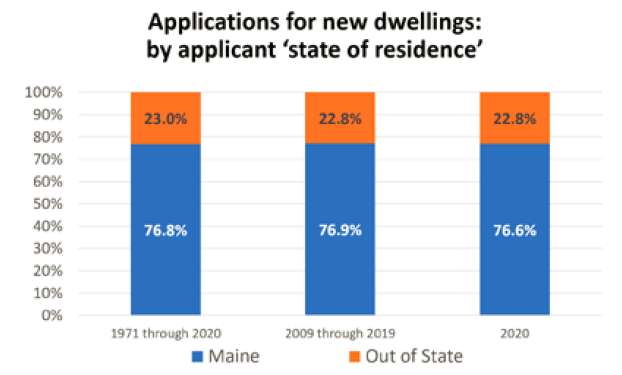
Processing Your Payment
Please do not leave this page until complete. This can take a few moments.
- News
-
Editions
View Digital Editions
Biweekly Issues
- December 1, 2025
- Nov. 17, 2025
- November 03, 2025
- October 20, 2025
- October 6, 2025
- September 22, 2025
- + More
Special Editions
- Lists
- Viewpoints
-
Our Events
Event Info
Award Honorees
- Calendar
- Biz Marketplace
New home, building permits skyrocket in Maine's unorganized territory
 Courtesy / Land Use Planning Commission
Maine's 10.4 million acre unorganized territory has seen a development surge, as building permits for homes spiked in 2020 and are still increasing halfway through 2021.
Courtesy / Land Use Planning Commission
Maine's 10.4 million acre unorganized territory has seen a development surge, as building permits for homes spiked in 2020 and are still increasing halfway through 2021.
The woods and mountains of Maine's millions of acres of unorganized territory aren't immune from the pandemic-era real estate blitz, but it's with a twist — the increasing surge of building permits is largely from Maine residents.
There was a 47% increase in 2020 of people seeking residential building permits from the Land Use Planning Commission, which oversees planning and zoning for the unorganized territory, the parts of the state that don't have a municipal government.
In 2021, the amount of permit applications "has escalated big time," Judy East, LUPC director, told Mainebiz Tuesday. "We're exceeding last year's numbers considerably."
In 2020, the commission handled 503 completed residential building permits and approved 492 for the 10.4 million acres it oversees, most of it in the northern half of the state and Downeast. The closest the commission had come to that number was 2017, when it had 438 residential applications. In 2019, it received 398.
The 163 approve applications for new dwelling units was up 47% from 2019. The rest were new or expanded garages, which were up 60% and applications for new accessory structures, which were up 96%.
By the end of May, more than 200 applications had been submitted, more than 79% ahead of last year's pace.

Mainers going 'upta camp'
East said the reasons for the increase in residential permits — not only for new dwellings, but for accessory dwellings and garages — is the same reason the real estate market is so hot in the more populated parts of Maine. Pandemic flight, more remote working and learning and, for Mainers, the urge to "staycation" rather than travel.
While the commission doesn't track home and land sales, the Maine Association of Realtors reported last month that sales in the state's northern counties were nearly double, and in Aroostook County 65% higher, than what they were this time last year.
While the building permits increase follows the hot trending real estate market in Maine, there's one trend it's not following — more than three-quarters of the permits for new dwellings are from Maine residents. That statistic has been solidly consistent since the LUPC was formed in 1971.
"I think it's a little bit of the 'going upta camp' thing — a lot of people already have camps up there," so are familiar with the area, East said. "But I think people in Maine also know it's a wonderful place."
Particularly wonderful for those looking to build or expand are the North Woods. Of the 503 applications received, 431 were in the state's most northern counties —104 in Aroostook, 100 in Piscataquis, 85 in Penobscot, 72 in Franklin and 70 in Somerset. The rest of the majority of the UT is in Oxford, Hancock and Washington counties.
'We're definitely feeling this'
East said the large amount of applications poses a problem — the LUPC has a staff of 21 in six offices across the state and the impact on the staff is intense. Aside from the 503 building permit applications, it also received 44 commercial development applications and many in other categories, for a total of 659.
"We're feeling this, we're definitely feeling this in every regional office," she told the commission at its monthly meeting Wednesday morning.
Not only is the staff buried in permit applications, but every office is getting dozens of calls a week that are often the responsibility of a different agency.
While the commission released a series of pamphlets last year aimed at answering some of those questions before people pick up the phone — everything from what you need to know to build a house to what the adult-use and medical-use cannabis rules are — calls are still coming in.
A big issue is that with the staff focused on permitting, there's less focus on enforcement of rules for those who are building without permits.
"We need more permitting staff and we need more enforcement staff," she told Mainebiz. "You don't know what you don't know."
East said the LUPC, which is part of the state Department of Agriculture, Conservation and Forestry, plans to ask for more money for staff in the state supplemental budget later this year, and possibly hire contract planners and inspectors until then.
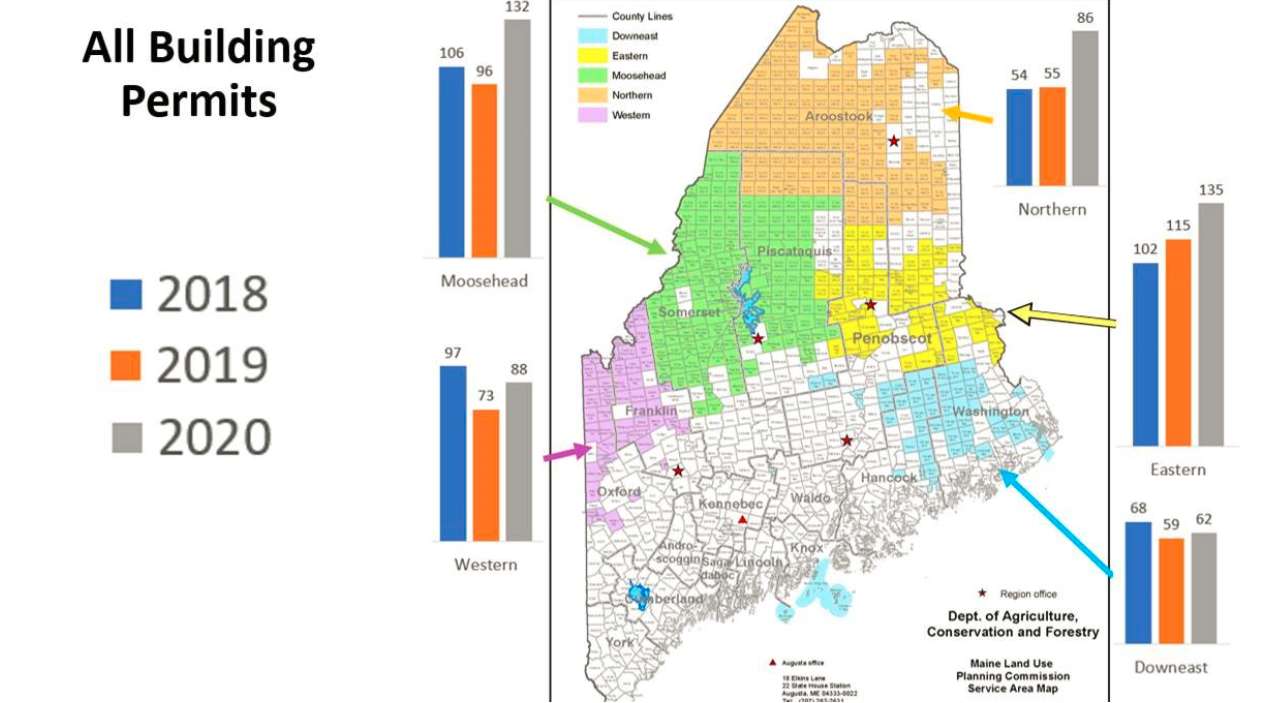
Eyes on adjacency rule change
The surge in permits also comes after the commission, in April 2019, revised its "adjacency rule," the policy that all new development had to be within a mile of existing compatible development. The adjacency policy, and the 2019 revision, doesn't apply to individual single-family homes, but does apply to subdivisions.
The LUPC rewrote the principle because it was "too blunt a tool" for such a large area where one size doesn't fit all. As rewritten, the policy encourages new zones for development in the places that are generally suitable for that type of use; mostly near towns and in areas where public services are available.
Everett Worcester, chair of the commission, said at Wednesday's meeting that the increase in permits has a lot more to do with the pandemic than with changing the adjacency principle. He said the revision "will help in the long run," given the increase of permit applications.
But the Natural Resource Council of Maine, which opposed the rule change, said that the increase in permits, along with the change, is a cause for concern.
Melanie Sturm, NRCM forests and wildlife director, said that the commission should be taking into account the impact the increase will have on wildlife and natural resources, and keeping a closer eye on subdivisions and commercial development. She said this is particularly true in the North Woods.
The removal of the adjacency rule "opened up a lot of the woods," she said. She said now that the rule is in place, the NRCM is looking forward, not back, which includes making sure development is monitored and is held to the requirements that are in place now.
Among the goals for 2021 in the LUPC 2020 report to the Legislature early this year was one to track outcomes of the 2019 adjacency and subdivision rulemaking.
East said that the staff is focused on making sure that permits are approved that meet the rules for the vast unorganized area. But "there's a lot of pressure."
As the rate of permits continues. "We're trying to prioritize right now."
Mainebiz web partners
Related Content

The Giving Guide
The Giving Guide helps nonprofits have the opportunity to showcase and differentiate their organizations so that businesses better understand how they can contribute to a nonprofit’s mission and work.
Learn More
Work for ME
Work for ME is a workforce development tool to help Maine’s employers target Maine’s emerging workforce. Work for ME highlights each industry, its impact on Maine’s economy, the jobs available to entry-level workers, the training and education needed to get a career started.
Learn More
Groundbreaking Maine
Whether you’re a developer, financer, architect, or industry enthusiast, Groundbreaking Maine is crafted to be your go-to source for valuable insights in Maine’s real estate and construction community.
Learn more-
The Giving Guide
The Giving Guide helps nonprofits have the opportunity to showcase and differentiate their organizations so that businesses better understand how they can contribute to a nonprofit’s mission and work.
-
Work for ME
Work for ME is a workforce development tool to help Maine’s employers target Maine’s emerging workforce. Work for ME highlights each industry, its impact on Maine’s economy, the jobs available to entry-level workers, the training and education needed to get a career started.
-
Groundbreaking Maine
Whether you’re a developer, financer, architect, or industry enthusiast, Groundbreaking Maine is crafted to be your go-to source for valuable insights in Maine’s real estate and construction community.
ABOUT
NEW ENGLAND BUSINESS MEDIA SITES
No articles left
Get access now
In order to use this feature, we need some information from you. You can also login or register for a free account.
By clicking submit you are agreeing to our cookie usage and Privacy Policy
Already have an account? Login
Already have an account? Login
Want to create an account? Register
Get access now
In order to use this feature, we need some information from you. You can also login or register for a free account.
By clicking submit you are agreeing to our cookie usage and Privacy Policy
Already have an account? Login
Already have an account? Login
Want to create an account? Register


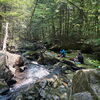

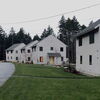



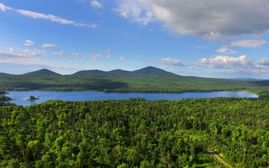


0 Comments